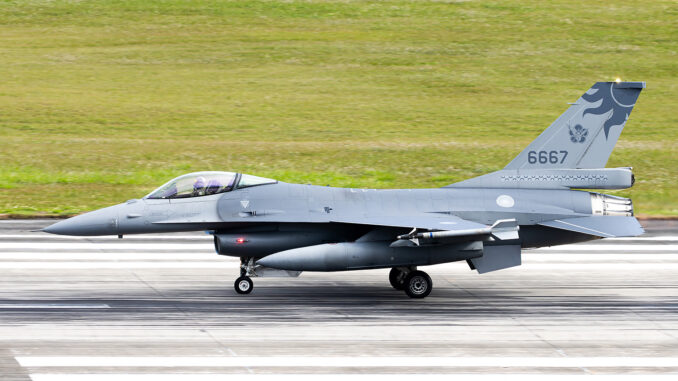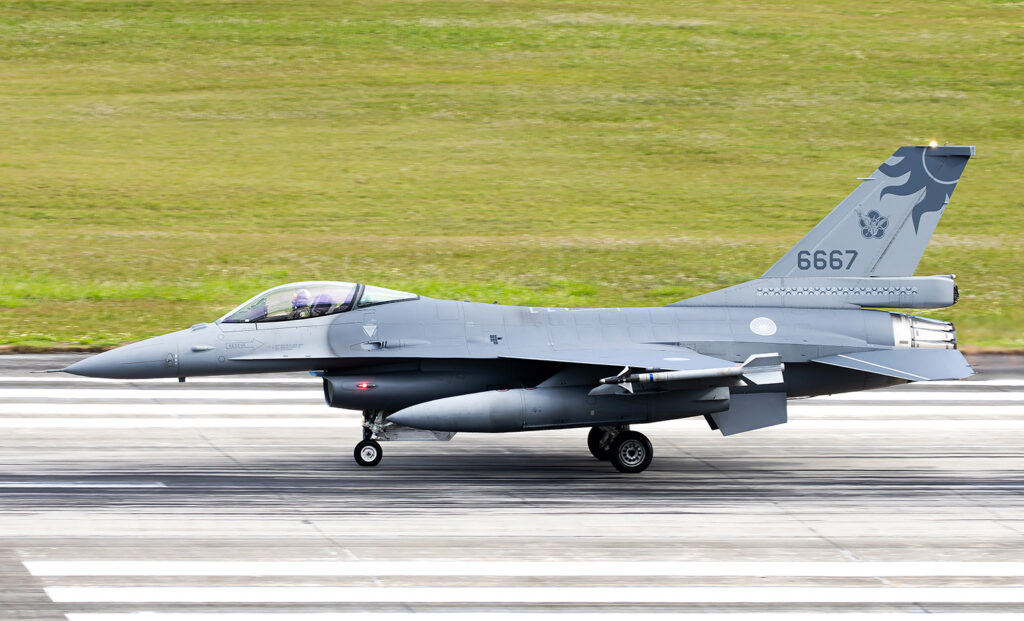
Taiwan is monitoring 12 military aircraft and 11 Chinese ships near its coast, intensifying tensions in the region with strategic deployments.
Between 25 and 26 August, Taiwan closely monitored the movements of 12 military aircraft and 11 Chinese ships around the island. Six of the planes crossed the median line of the Taiwan Strait, an Air Defence Identification Zone (ADIZ) critical to Taiwan’s security. In response, Taiwan deployed aircraft, warships and coastal missile systems to monitor Chinese activity. This intensification of military movements is part of a series of Chinese actions described as grey zone tactics, aimed at weakening Taiwan’s strategic position without the direct use of armed force.
Chinese military activity: an intensification of incursions
The tracking of 12 Chinese military aircraft and 11 ships by Taiwan between 25 and 26 August marks a new stage in the intensification of China’s military activities around the island. Six of these aircraft crossed the median line of the Taiwan Strait, an unspoken but crucial demarcation line for maintaining regional stability. The incursions into Taiwan’s ADIZ, which includes critical areas in the centre, south-west and east, demonstrate a clear Chinese strategy to test and possibly weaken Taiwan’s air defences.
Since the beginning of August, Taiwan has already monitored 422 incursions by Chinese aircraft and 241 ship movements. These figures represent a significant increase on previous months, suggesting China’s desire to exert continued pressure on Taiwan. This strategy is part of a wider dynamic in which China uses its armed forces not only for demonstrations of force, but also to maintain constant pressure on Taiwan’s defence capabilities.
Taiwan’s response: surveillance and defensive preparation
In response to these incursions, Taiwan immediately reacted by deploying its own warplanes and ships, as well as coastal missile systems. These measures are not only defensive, but are also intended to demonstrate Taiwan’s ability to monitor and respond rapidly to Chinese military movements. The deployment of coastal missile systems is particularly significant, as it demonstrates Taiwan’s willingness to actively defend its maritime borders against any potential incursion.
Taiwan’s response is also a clear message to Beijing that any attempt to alter the status quo through minor military incursions will be systematically monitored and countered. However, the increasing frequency of these events is testing Taiwan’s ability to maintain constant vigilance without exhausting its military resources. This raises questions about the long-term sustainability of this systematic response strategy.

Grey zone tactics: a Chinese strategy of pressure without direct confrontation
Grey zone tactics, widely used by China since 2020, consist of exerting constant military pressure without provoking direct confrontation. This approach enables China to achieve its strategic objectives without triggering a large-scale military response from Taiwan or its allies, notably the United States. By gradually increasing the number of incursions into Taiwan’s ADIZ, China is testing the limits of Taiwanese tolerance and gauging the responsiveness of its armed forces.
This strategy has several objectives. On the one hand, it aims to exhaust Taiwanese resources, forcing the island to devote a significant proportion of its budget and forces to surveillance and responding to incursions. On the other hand, it seeks to normalise the Chinese military presence around Taiwan, creating a ‘new normal’ where Chinese incursions become increasingly frequent and less alarming to the international community. This strategy could, in time, reduce the perception of an immediate threat, making potential Chinese military action less shocking.
Strategic consequences for Taiwan and the region
The intensification of Chinese military activities around Taiwan has profound strategic consequences for regional security. For Taiwan, the need to respond to every Chinese incursion represents a constant challenge that could deplete its military and economic resources. In the long term, this could weaken the island’s defence capabilities, making an invasion or military escalation more likely and more difficult to counter.
For the region, these incursions increase the risk of misunderstandings or military accidents. A single miscalculation could lead to a rapid escalation, potentially involving other regional powers such as Japan or the United States. In addition, this situation could prompt other countries in the region to strengthen their own defence postures, contributing to an arms race in East Asia.
Long-term prospects: towards increasing militarisation
An analysis of recent events shows a trend towards increasing militarisation of the Taiwan Strait. If Chinese incursions continue to increase in frequency and intensity, Taiwan could be forced to reassess its defence strategy, potentially by increasing its military capabilities or seeking more direct support from its allies. This situation could also lead Taiwan to strengthen its international alliances, notably with the United States and other Asian democracies, to counter Chinese pressure.
In this context, China appears to be testing the limits of Taiwanese and international patience, while seeking to achieve its strategic objectives without resorting to direct force. However, this strategy carries risks, not least that of provoking a more robust military response from Taiwan or its allies, which could lead to open conflict.
War Wings Daily is an independant magazine.